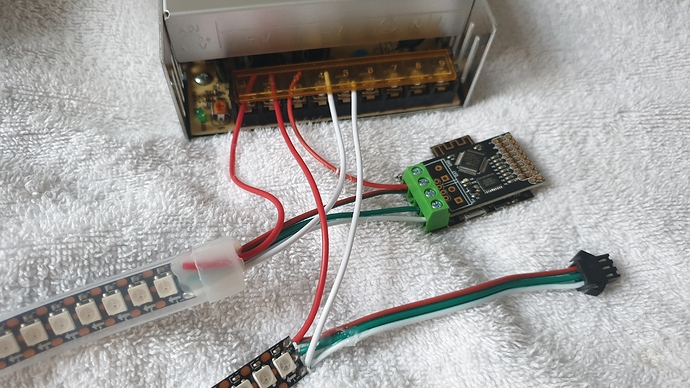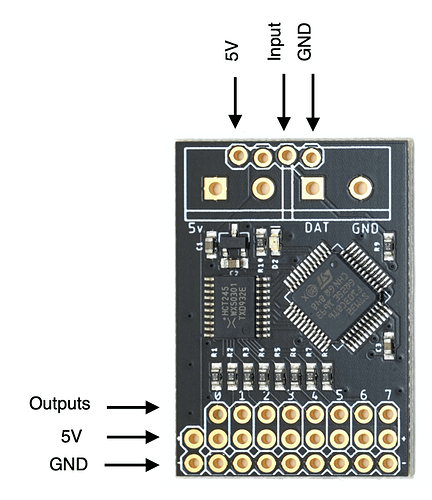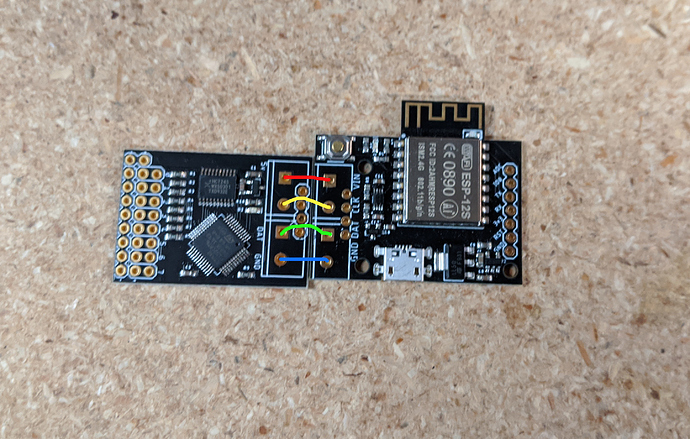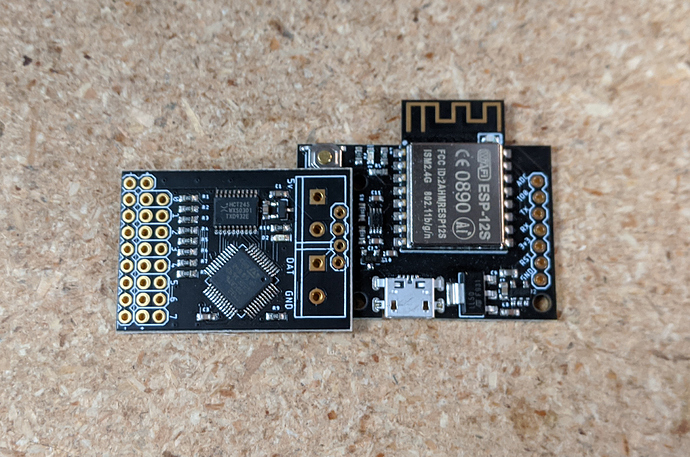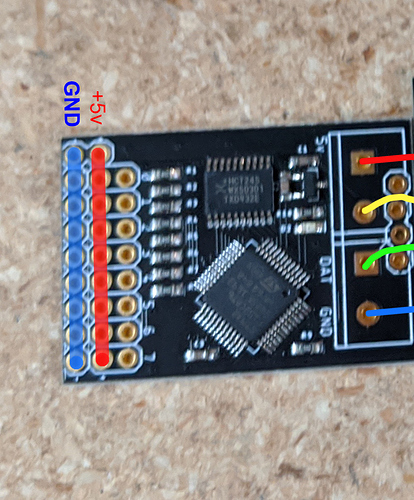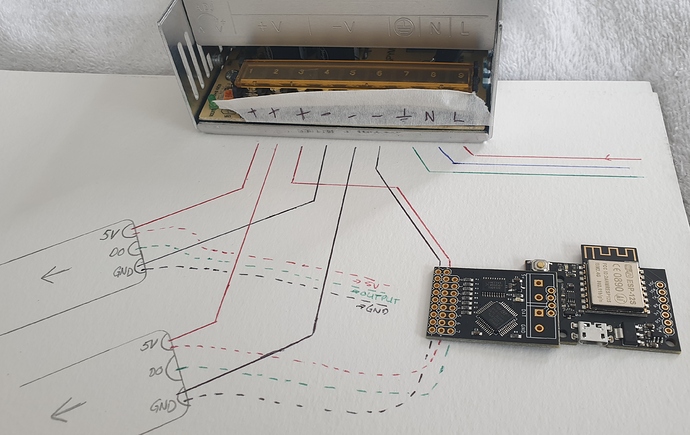Hi Oran,
When using the output expander, it connects to Pixelblaze’s single output. You won’t connect your LEDs to that part anymore. The output expander’s input doesn’t come from the right side, that is where the sensor board can connect.
Here’s the hookup information (this should also be on the printout that came with the board):
Basically, you’ll flip it around 180 degrees, and connect it’s inputs to the output on Pixelblaze where you have a screw terminal. Then, your LEDs get their inputs from one of the 8 output channels marked 0-7 on the bottom (going off the picture). The data is the top row. You can distribute power as well, using the 2nd and 3rd rows.
You can wire them up like this:
If you didn’t already have the screw terminal attached, I would say that you can overlap the 2 boards, the pins from the 0.2" and 0.1" headers line up just right. (Use a bit of wire through the holes to complete the sandwich connection)
It’s possible to do both, with the screw terminal going through both boards. While the data line can’t be used for LEDs, it can be a handy way to get power to the boards from a supply like yours. You can also provide power through the 2 extra pins on the output expander near the outputs, just to the left of output 0.
Here’s a color overlay showing how power is connected on the expander output rows:
Those same power signals also go to the input connection, and thus back to Pixelblaze, so you can back-feed power that way, or forward-feed it from the inputs and/or PB, whichever is most convenient. For high current (>3A or so) like your setup, wire up only GND and the data channel from the output expander to the LEDs, and provide +5v power for the LEDs directly from the power supply. You’ll still want to give Pixelblaze 5v through one of the connections mentioned above.
For power wiring, I like to reference this AWG chart:
https://www.powerstream.com/Wire_Size.htm
If each is pulling 120 watts, thats 24A. Your AWG12 is plenty thick. You can even drop to 14 gauge as long as each strip has it’s own pair of power wires. You’ll want to inject power along each of the 3 meter long strips so that the strip itself doesn’t have to carry the full 24A for all 3 meters.
